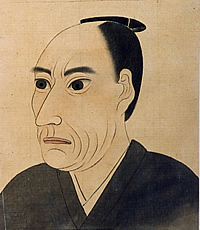Egawa Tarozaemon, the Father of Japanese Bread
 Bread is central to our Western civilization, so much so that it’s a common metaphor for spiritual nutrition. The starving Israelites wandering in the desert survived on manna from heaven. Jesus multiplied the loaves to feed the multitudes.
Bread is central to our Western civilization, so much so that it’s a common metaphor for spiritual nutrition. The starving Israelites wandering in the desert survived on manna from heaven. Jesus multiplied the loaves to feed the multitudes.
So it’s rather surprising to learn that bread was not first baked in Japan until 1842. Egawa Tarozaemon, a 19th century Japanese Renaissance man, was the man responsible, and is thus known as “Panso”: the Father of Bread. He felt bread would be the ideal food for the “farmer militia” he came up with the idea of training in readiness for attacks from foreign ships, although the bakufu never adopted his plan.
Egawa not only introduced bread into Japan, but was also responsible for bringing in landfill technology for creating harbor islands. He did the initial work that led to the development of Odaiba , a huge man-made island in the middle of Tokyo Bay, now packed with leisure and business facilities. He also built some of the earliest cannons in Japan, which required construction of a pig-iron furnace, still a landmark in the area. He dabbled in painting too: the drawing to the left is his self-portrait.
Egawa was a hereditary local governor in Nirayama (map), a part of modern-day Shizuoka Prefecture. His ancestral house, which still stands, is well worth a visit. Nearby, you can purchase modern-day versions of the bread he made 150 years ago; it’s dry, almost cracker-like.
Additional information in Japanese (Wikipedia ) and English.

May 25th, 2005 at 12:39
Q = is he an ancestor of mine ?